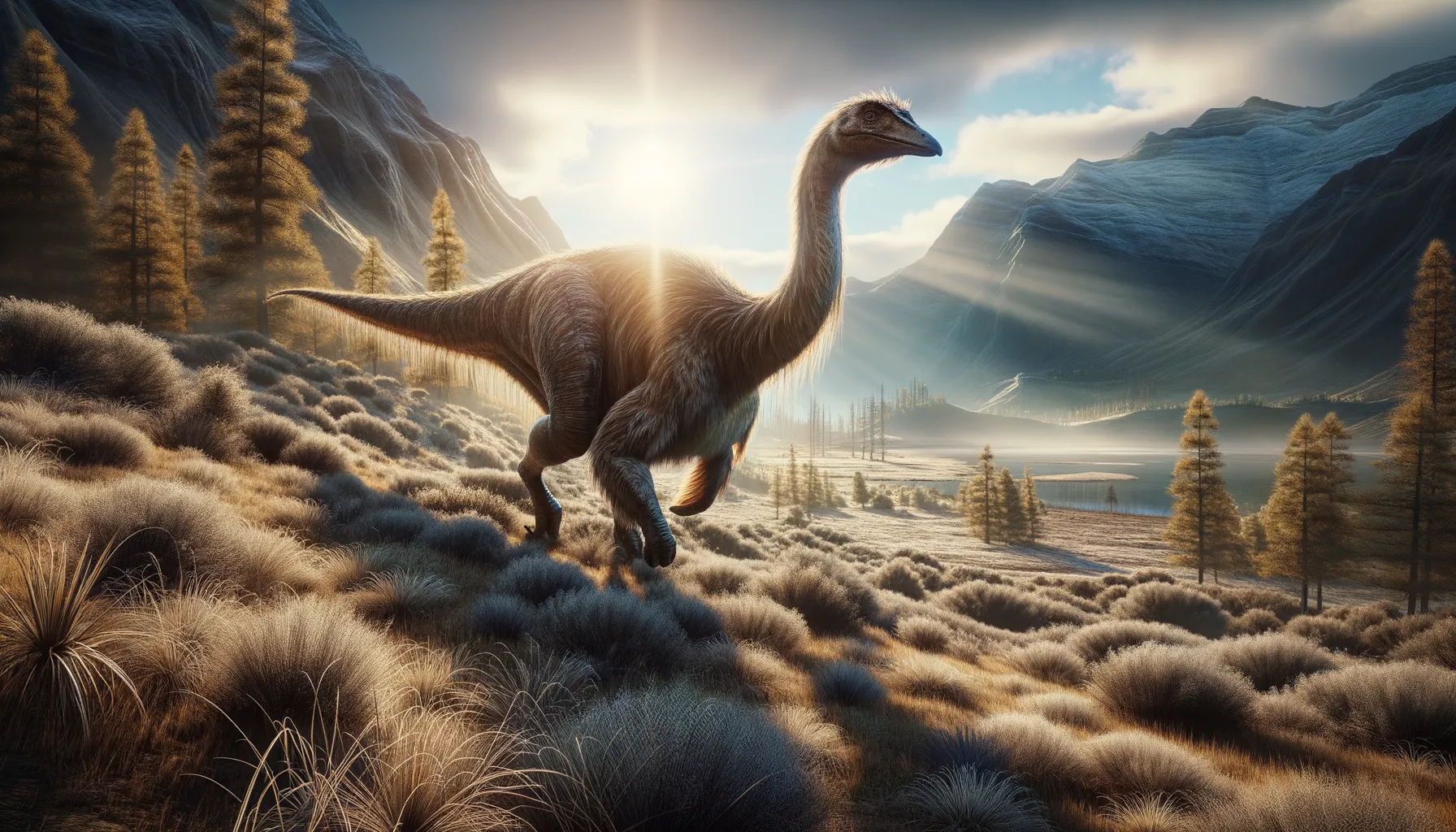
Archaeornithomimus
Swift and nimble, like a prehistoric sprinter.
Period
Cretaceous
Length
Roughly 3.3 meters long.
Height
About 1.8 meters tall.
Weight
Approximately 45 to 91 kg.
Archaeornithomimus was a fast and nimble dinosaur that lived during the Cretaceous period. It belonged to a group known as ornithomimids, often dubbed as 'ostrich dinosaurs' due to their bird-like appearance. This dinosaur was lightweight with long limbs, indicating it was an adept runner. Its fossils provide valuable insights into the evolution of theropod dinosaurs and their morphological adaptations for efficient locomotion.
Diet
Archaeornithomimus likely had an omnivorous diet. It probably fed on small reptiles, insects, and plants. This adaptability in diet may have supported its survival in various environments.
Hunting
Being a fast runner, it might have chased down small prey such as insects and lizards. It would have used its speed and agility to escape larger predators while foraging.
Environmental challenges
During its time, Archaeornithomimus faced challenges such as fluctuating climates and shifting ecosystems. These changes could impact the availability of food sources. The presence of larger predators also posed a constant threat, necessitating its speed for survival.
Speed
Fast runner, likely reaching speeds up to 40 km/h.
Lifespan
Estimated around 10 to 20 years.
First discovery
Discovered in 1923 in Inner Mongolia, China.
Fun Facts
- Archaeornithomimus lived during the Late Cretaceous period, around 96 million years ago.
- Its name means 'ancient bird mimic' because it resembled modern ostriches.
- Unlike most of its dinosaur contemporaries, Archaeornithomimus was likely a very fast runner.
- This dinosaur might have dined on small animals and plants, making it an omnivore.
- It belonged to the group of dinosaurs known as ornithomimosaurs, often referred to as 'ostrich dinosaurs.'
- Archaeornithomimus had long legs and a lightweight body, which helped it move quickly.
- Fossils of Archaeornithomimus have been found in China, offering insights into its environment and lifestyle.
Growth and Development
Archaeornithomimus would have started life hatched from eggs, growing rapidly in its early years. Its growth involved developing long legs and balanced body proportions suitable for fast running. Juveniles would rely heavily on speed to avoid predators and increase their chances of reaching adulthood.
Habitat
Archaeornithomimus inhabited the floodplains and forests of what is now Asia. It occupied environments with abundant plant life and freshwater sources. These habitats supported a diverse ecosystem, enabling Archaeornithomimus to leverage its adaptable diet.
Interaction with other species
Archaeornithomimus shared its habitat with various herbivorous and carnivorous dinosaurs. It may have been preyed upon by larger theropods. It likely competed with other small to medium-sized dinosaurs for food resources.
Natural lifespan
Its natural lifespan is thought to have been around 10 to 20 years.
Reproduction
Reproduction involved laying eggs, likely in small nests built on the ground. Pairs or small groups may have shared nesting sites and responsibilities. This nesting strategy offered protection to eggs from environmental dangers and predators.
Social behaviour
Little is known about its social behaviour, but it might have lived in small groups for protection and cooperative foraging. Group living could enhance survival rates by making it harder for predators to single out individuals.
Fossil locations
Fossils of Archaeornithomimus have predominantly been found in China and Mongolia. These discoveries provide key insights into the diversity of the ornithomimid group. The fossils are primarily located in the Djadochta Formation, a fossil-rich area from the Late Cretaceous.
